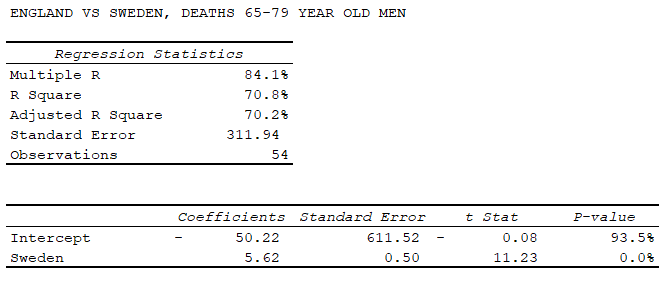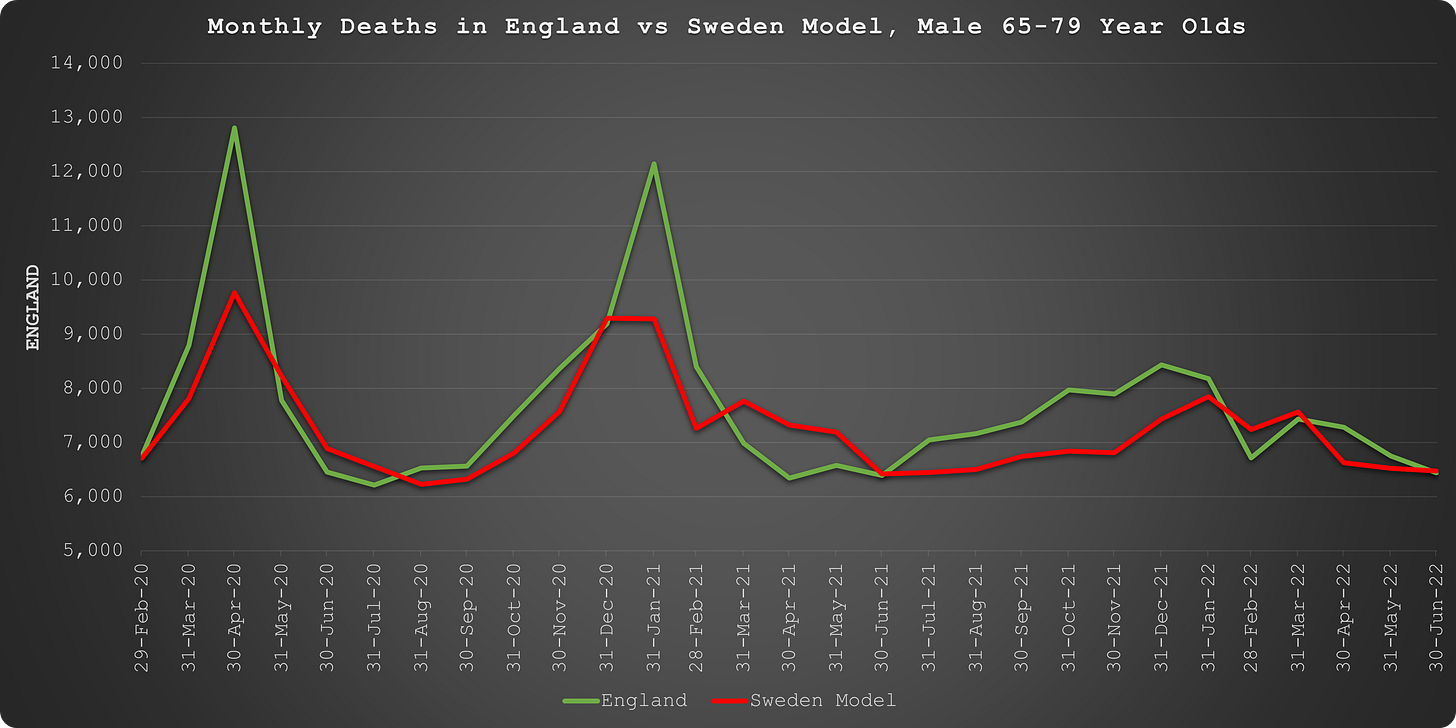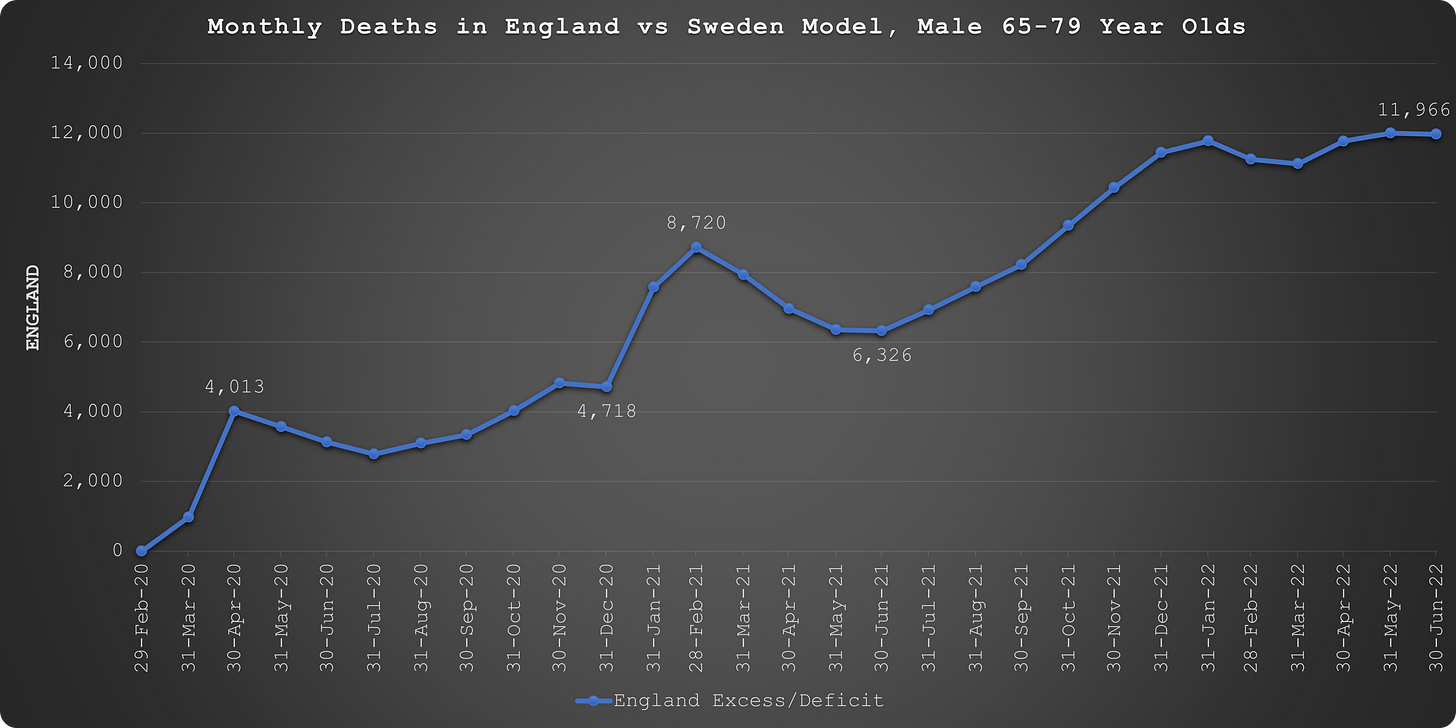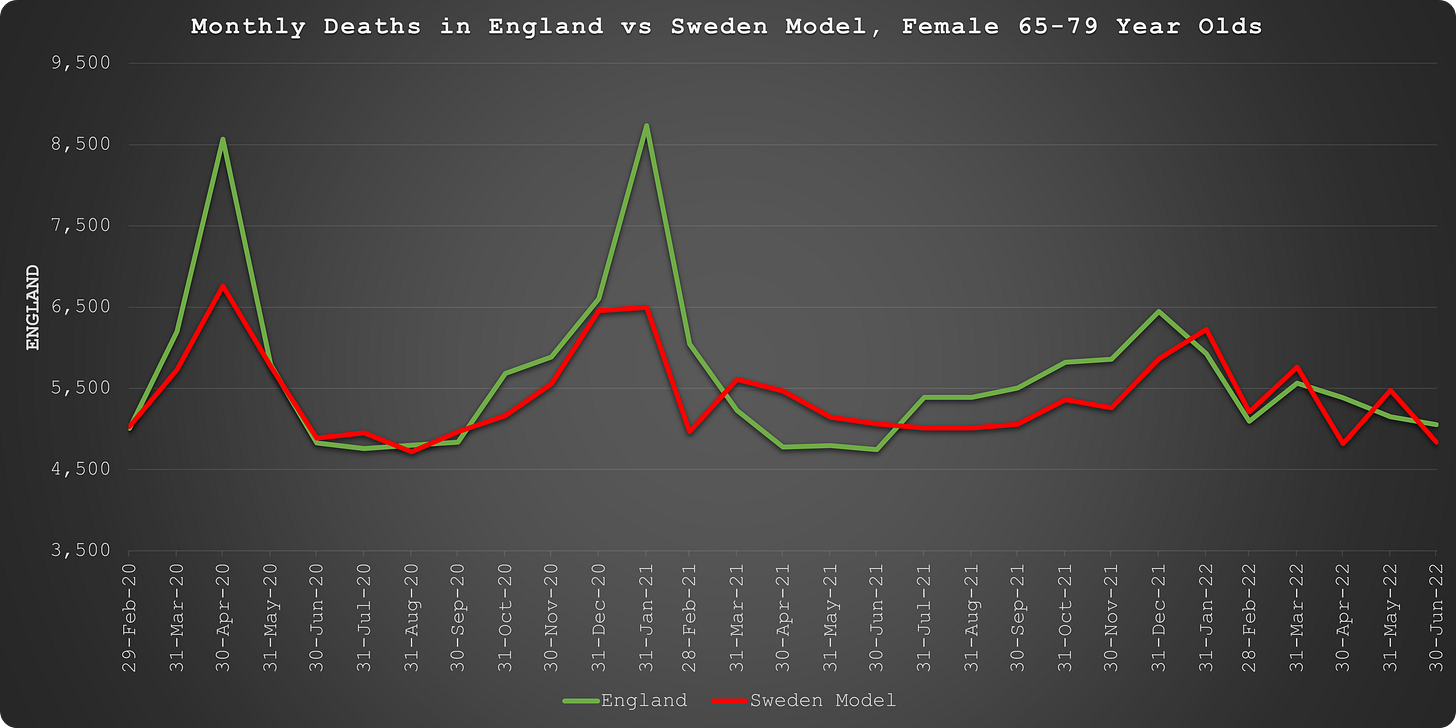An estimate of deaths of 65 to 79 year olds in England reduced or caused by the government's response to COVID
Using a simple model derived from Sweden as a control, we can estimate whether the things done in England that were not done in Sweden were any benefit or not.
While I wait for the ONS to provide the up-to-date data on deaths in England by age, sex and cause, I thought I’d run a quick model to estimate (once again) how many deaths in England were spared or caused by the COVID measures.
As I have shown before, Sweden is a great proxy for England in terms of mortality. For the men aged between 65 and 79 (because this is how the SCB publishes the Swedish data), 71% of the variability in England deaths can be “predicted” by looking at the Swedish data:
Graphically, it looks like this for the calibration period between Sept 2015 and Feb 2020, just before any significant changes were made in each country’s COVID response:
In fact, the model would have been even more exact except for a timing issue in the 2017/18 season. However, as we are all familiar by now, periods of excess are typically followed (or preceded) by periods of deficit.
And so it is with this model that over the entire period, things quickly balance themselves out with England registering almost 1,000 deaths more than expected in Jan 2018 but 2,000 less than expected by Oct 2019:
Most importantly, the difference between the model and the total actual deaths over the entire period is zero. In other words, apart from a few timing issues that quickly resolve themselves, the model estimates the correct number of deaths overall.
Note, however, that in the run up to COVID, England has experienced a period of excess deaths relative to the model so we should expect to see a deficit.
To estimate whether England’s COVID response yielded better or worse results than Sweden’s for this age and sex group, we simply extend the model to the end of June 2022 (this being the last date that the ONS has released usable data so far):
In spite of the fact that England experienced an excess prior to COVID, it is pretty clear that England experiences more deaths than expected by the model. England has higher peaks during both the initial spring 2020 wave and the subsequent winter 2021 wave. It should also be apparent that England has consistently higher monthly deaths ever since.
Just how much higher is easy to estimate in the same way as before:
By the end of April 2020, the month in which epidemic COVID peaked, the English response has resulted in 4,000 more deaths than predicted by the Sweden model.
Between the start of Jan 2021 and the end of Feb 2021, England suffers a further 4,000 more deaths than predicted.
Ultimately, England has experienced 12,000 more deaths than predicted by following the Swedish policies and does not yet show a tendency to return towards baseline, even after more than two years of deaths being pulled forward.
The main difference between the two countries is that Sweden did not close schools and businesses as aggressively as England, nor impose mask mandates during the epidemic.
Sweden also lagged England substantially in the “vaccine” rollout when COVID should have become endemic. By the time England excess deaths peak in Feb 2021, England has administered 31 doses per hundred people compared to just 8 for Sweden:
Would it surprise you if the exact same picture emerges for the women too?
It is not quite so bad overall for the women, with “just” 7,000 more deaths than expected but with that same highest excess peak in Feb 2021, once England has “successfully” jabbed almost four times as many times as Sweden.
So, in total, I estimate the differences in England’s pandemic response compared to Sweden’s, including its “most successful” jab campaign have resulted in the untimely demise of around 19,000 65 to 79 year olds in England.
#CanYouSeeItYet?












Well Joel , the blind vaxxers wont even read these accurate figures that you research and post. I know this from my stupid dumb full on vax friends, ah well you can lead a horse to water but you cant make it drink.
Here in Sweden a great effort was made to prioritise cancer patients and make sure that they got their treatments same as usual, even if there was a pandemic going on. From what I read, this did not happen in the UK, and should be a significant and measurable factor.